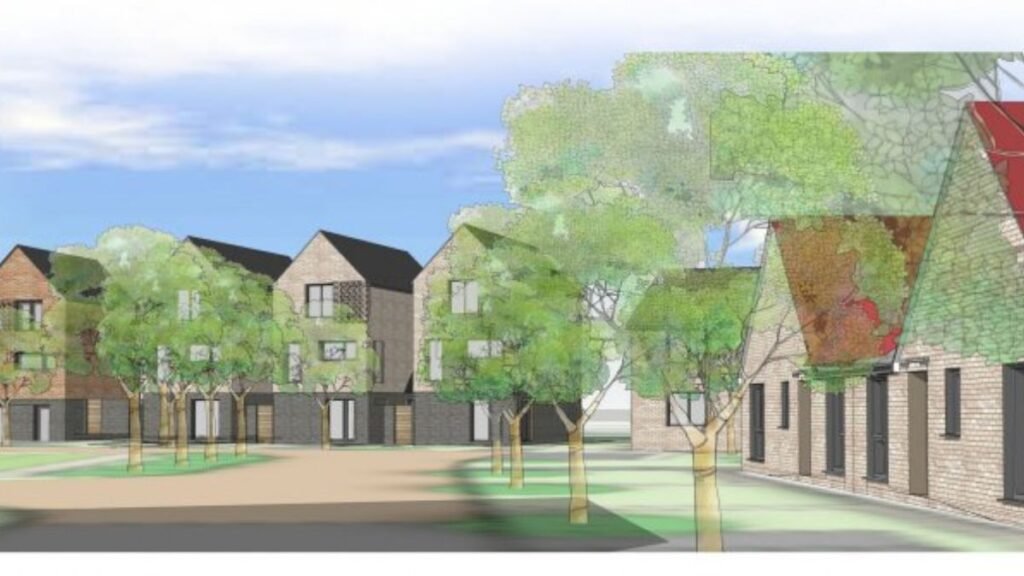The housing crisis in Britain is not a new topic. For the past several years, thousands of families and more than 1.65 lakh children have been living in temporary shelters here. Rising rents, expensive houses, and limited options for low-income groups have made this crisis even more severe. In view of this concern, the UK government has taken a new and ambitious step – the £39 billion ‘Social and Affordable Homes Programme’, which will build about 3 lakh new homes in the coming ten years.
What is the objective of this scheme?
The basic objective of this scheme is not just to build houses, but to improve the quality of life and provide a permanent, safe and affordable shelter to every family. This scheme is part of the government’s comprehensive “Plan for Change” policy, under which the target is to build 1.5 million (15 lakh) new homes across the country.
£39 billion housing programme: highlights
The following are some of the key features of the scheme, which starts in 2025 and runs until 2035:
Key features Overview
| Key Feature | Details |
|---|---|
| Total Investment | £39 billion (over the next 10 years) |
| Homes Planned | Approximately 300,000 new homes |
| Social Rent Focus | Over 60% (approximately 180,000 homes) |
Who will benefit from the scheme?
The scheme will prioritise people who are currently facing the greatest housing crisis:
- Families living in temporary shelters.
- People on low incomes who need social rented housing.
- Young or first-time renters who cannot afford private rent.
- Tenants living in old, unsafe or dilapidated housing.

The aim of this program is to provide relief to the most needy sections of society and give them a stable and dignified life.
How to apply?
This scheme by the government is not to give money directly to individuals, but to fund local councils and housing associations, which will build and allocate houses.
- If you want to take advantage of this scheme, you have to take the following steps:
- Register for social housing in the local council of your area.
- When a new housing project starts, apply to the concerned housing association.
Make sure that you meet the necessary eligibility such as income, family status, and regional connection.
Big benefits of this scheme
This scheme is not limited to increasing the number of houses only, but it will have a wide impact on both social and economic sectors:
- The number of permanent houses will increase: More than 3 lakh houses will be built in the next 10 years.
- Rent will be linked to income: For low-income people, the rent will be fixed according to the local income, which will give them financial relief.
- Better living standards: Decent Homes Standard and energy efficiency rules will allow people to live in clean, safe and affordable homes.
- Reduce the need for temporary shelter: More permanent homes available will reduce the need to live in temporary accommodation.
- Investment certainty for housing providers: A 10-year rent settlement starting in 2026 will boost construction and investment.

New changes and reforms
The plan proposes not just funding, but also reforms to several rules and standards:
- Update to Decent Homes Standard: This will give people better quality homes.
- Energy efficiency rules: Energy efficiency standards will be made mandatory for social housing for the first time, reducing tenant bills.
- Right to Buy reform: This will control the sale of council houses and encourage new construction.
- 10-year rent policy: Starting in April 2026, which will help councils and housing associations plan for the long term.
- New consultations: People will be asked for suggestions on weekly rent caps (£1–£2) and energy standards.
London will get special attention
Apart from Homes England, about 30% of the funds — about £11.7 billion — will be given to the Greater London Authority, as London has the highest housing demand. This will also provide relief to low-income people in urban areas like London.
Conclusion
This new housing program of £39 billion is not just a budget announcement, but a deep commitment from the UK government to the vulnerable sections of society. This scheme will provide stability, security and dignity to the lives of millions of people. In the coming years, when these homes are ready, this step will not only solve the housing crisis, but will contribute to building a more equal and compassionate society.
FAQs
Q1. What is the goal of the UK’s £39 billion housing programme?
A. The programme aims to build around 300,000 new social and affordable homes over the next ten years. Its primary goal is to provide secure and lower-cost housing for families, young people, and those in temporary accommodation. It’s part of a larger effort to tackle the ongoing housing crisis in the UK.
Q2. Who can benefit from this housing programme?
A. The programme is designed for low-income households, families in temporary housing, and people struggling to afford rent in the private sector. It also supports council tenants living in poor conditions. Priority will be given to those with the highest housing need.
Q3. How can someone apply for housing under this plan?
A. You don’t apply directly to the national government. Instead, you must register with your local council or housing association once new homes become available. Eligibility is assessed based on income, housing need, and local connection.
Q4. What type of homes will be built under this programme?
A. The plan focuses on social and affordable homes, with at least 60% meant for social rent, meaning rent is tied to local income levels. These homes will meet new energy efficiency standards and an updated Decent Homes Standard. This ensures safe, modern, and more affordable living spaces.
Q5. When will these new homes be available?
A. The programme starts rolling out in 2025 and will continue through 2035. New housing developments will open in phases, depending on local council planning and construction timelines. Citizens should stay in touch with their local authorities for updates.


